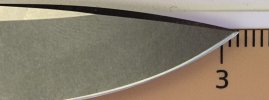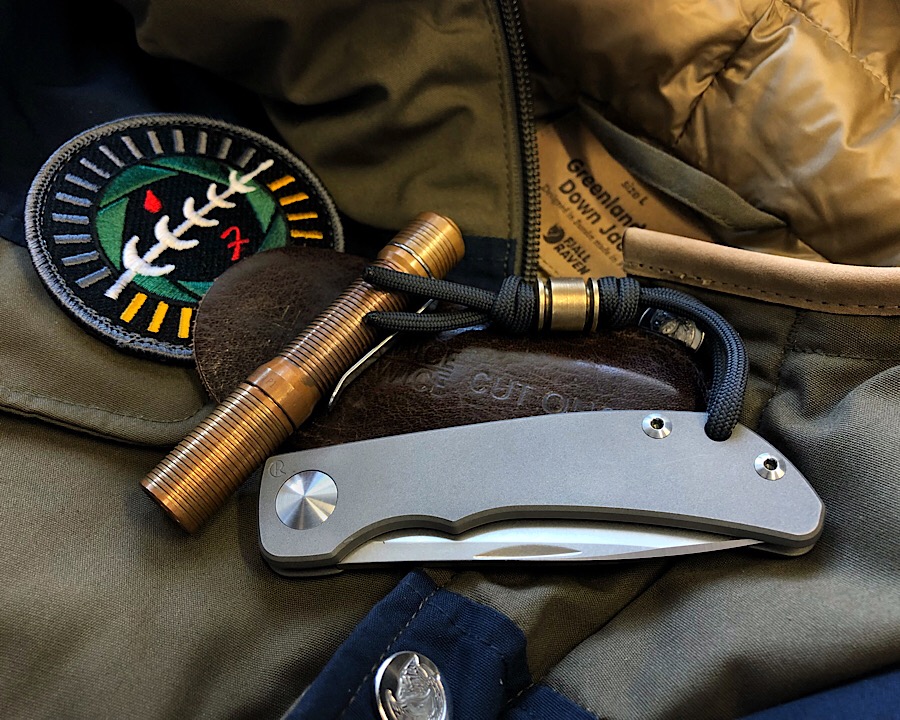-
The BladeForums.com 2024 Traditional Knife is available! Price is $250 ea (shipped within CONUS).
Order here: https://www.bladeforums.com/help/2024-traditional/
You are using an out of date browser. It may not display this or other websites correctly.
You should upgrade or use an alternative browser.
You should upgrade or use an alternative browser.
Impinda slipjoint... as I see it (after 2 months of field use)
- Thread starter PiterM
- Start date
- Joined
- Jun 3, 2017
- Messages
- 103
Can someone fortunate enough to own one of these measure the blade, from the end of the scale (I guess using the point that is closest to the tip) to the tip of the blade? I'd be curious how it actually measures, and whether it's clearly over 3 inches if someone was measuring casually. Many thanks.
- Joined
- Jun 3, 2017
- Messages
- 103
It's clearly over 3" if you're casually measuring the front edge of the scale to the tip of the blade.
Darn. I really wish I understood the thinking behind that decision better, as a slightly under 3" slipjoint would be ideal in many circumstances.
- Joined
- Sep 29, 2008
- Messages
- 10,394
Darn. I really wish I understood the thinking behind that decision better, as a slightly under 3" slipjoint would be ideal in many circumstances.
Edge length is suppose to be 3" and honestly I don't see much of a difference here. There's plenty of "perfect length" cutoff points. I think
- Joined
- Jun 3, 2017
- Messages
- 103
Edge length is suppose to be 3" and honestly I don't see much of a difference here. There's plenty of "perfect length" cutoff points. I thinkPiterM could lend more context on the non-US side of things.
As somebody observed earlier, being right at 3" or (ideally) clearly under 3" removes any debate if the law distinguishes between 3" and under versus over 3".
- Joined
- Jun 3, 2017
- Messages
- 103
Edge length is suppose to be 3" and honestly I don't see much of a difference here. There's plenty of "perfect length" cutoff points. I thinkPiterM could lend more context on the non-US side of things.
As somebody observed earlier, being right at 3" or (ideally) clearly under 3" removes any debate if the law distinguishes between 3" and under versus over 3".
Measuring a hollow grind is not easy, and especially near the edge. However, using a micrometer and placing the anvil & spindle faces at 50% (i.e. the edge runs through approximately the center of the measurement surfaces), I get this after about a dozen measurements at center blade on each-
Small Sebenza 21: 0.033 inch
Impinda: 0.033 inch
So they compare really close. The Impinda has a slightly thicker spine at 0.121 inch compared to the Small Sebenza at 0.119 (confirmed measurements). At center blade (measured tip-to-frame) the width of the Sebenza measures 0.840 inch and the Impinda 0.788 inch, so the Sebenza has a wider profile.
Small Sebenza 21: 0.033 inch
Impinda: 0.033 inch
So they compare really close. The Impinda has a slightly thicker spine at 0.121 inch compared to the Small Sebenza at 0.119 (confirmed measurements). At center blade (measured tip-to-frame) the width of the Sebenza measures 0.840 inch and the Impinda 0.788 inch, so the Sebenza has a wider profile.
- Joined
- Mar 5, 2007
- Messages
- 638
Just put my order in and started my 6 month wait. I figured there would be some shipped to dealers before then but didn’t feel like being bothered to try and scrounge the different dealers trying to get one before they disappeared. This way I’m going to get one eventually and have no worries. I have other knives to use until then.
- Greg
- Greg
Hi there thanks for sharing your experiences. When you grip the folder, the thumb would be resting on the blade spine. As it is a slip joint, would there be any chance that the blade closing due to the thumb resting on the blade? I am a noob when it comes to slip joints. Does it work same like a SAK by any chance?






